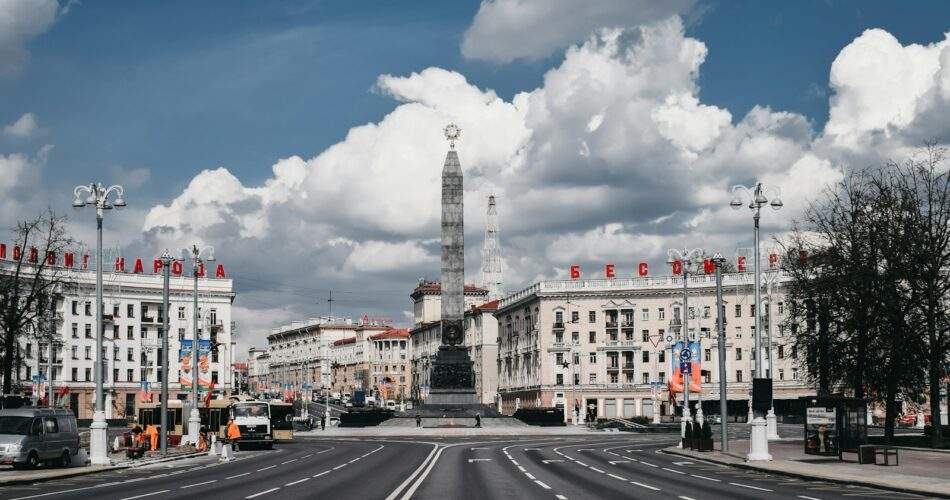Minsk doesn’t announce itself with medieval spires or romantic canals. Instead, Belarus’s capital unfolds in grand Soviet-era boulevards, verdant parks that seem to breathe between monumental buildings, and a cultural scene that feels refreshingly unpolished by mass tourism. This is a city where you’ll find yourself genuinely curious rather than checking boxes—where the weight of 20th-century history sits alongside art galleries, underground music venues, and café conversations that stretch long into the evening. Minsk rewards travelers who come with open minds rather than Instagram itineraries, offering something increasingly rare in Europe: a major capital that hasn’t been smoothed into generic tourist appeal. The city’s authenticity stems from decades of relative isolation, creating a cultural identity that feels distinctly its own.
The sweet spot for visiting Minsk runs from late May through September, when the city sheds its winter severity and the extensive park system becomes the social heart of local life. Summer temperatures hover comfortably between 20-25°C, perfect for exploring the riverside embankments and outdoor café culture that dominates Belarusian social life. July brings the Slavianski Bazaar in nearby Vitebsk, though Minsk hosts its own music and cultural festivals throughout summer. September offers particularly beautiful weather with fewer visitors and the gorgeous transformation of the city’s abundant greenery.
Winter is dramatically cold, with January temperatures regularly dropping below -10°C, but there’s something compelling about experiencing Minsk under snow—the monumentalist architecture seems designed for this season. December markets and New Year celebrations light up Independence Square, though pack serious cold-weather gear. Spring arrives slowly, with March and April often unpredictable and slushy. Avoid these transition months unless you’re after very low prices and don’t mind grey skies. Peak summer months see manageable crowds compared to Western European capitals, making Minsk refreshingly navigable even in July and August.
The Trinity Suburb, with its reconstructed 19th-century architecture in pastel colors, offers the postcard-perfect Minsk experience, though the real character emerges elsewhere. Independence Avenue stretches eleven kilometers through the city’s heart, showcasing the full spectrum of Soviet architectural ambition—from Stalin-era grandeur near Independence Square to the modernist confidence of later decades. Walk this avenue at dusk when the monumental scale feels less intimidating and more cinematic.
The National Library, a geometric diamond rising 72 meters high, divides opinion architecturally but offers the city’s best panoramic views from its observation deck. Nearby, the Island of Tears memorial provides an intimate counterpoint to Minsk’s grand spaces—a small, moving tribute to soldiers lost in Afghanistan. For deeper historical engagement, the Museum of the Great Patriotic War presents Belarus’s devastating World War II experience with powerful immediacy; a quarter of the population perished, shaping national identity profoundly.
The Oktyabrskaya district, particularly around Kastryčnickaja Street, reveals Minsk’s creative present—street art, independent galleries, and the kind of organic neighborhood life absent from more touristed areas. Here’s an insider tip: visit Ў Gallery, an artist-run space in an old factory building showcasing contemporary Belarusian artists working in a cultural environment most Western visitors can’t imagine. The Komarovsky Market operates as both functioning bazaar and cultural experience, where you’ll navigate stalls of pickled vegetables, smoked fish, and the social theater of babushkas negotiating over produce.
Belarusian cuisine emerged from peasant traditions and harsh winters, resulting in hearty, earthy food that’s far better than its international reputation suggests. Draniki—potato pancakes served with sour cream—are the national comfort food, found everywhere from cafés to formal restaurants. Machanka, a rich pork stew served with blini, represents traditional feast cooking, while kalduny (stuffed dumplings) come with various fillings. The recent revival of traditional recipes has elevated Belarusian cooking beyond Soviet-era blandness.
Try Vasilki for draniki variations you didn’t know existed, or Kamyanitsa for a full traditional spread in a folk-style setting that somehow avoids kitsch. Seasonal eating matters here—summer brings kvass, a fermented bread drink sold from yellow barrels on streets, while winter demands warming soups like solyanka. The craft beer scene has exploded recently, with Brovar microbrewery offering local interpretations alongside traditional meals. Don’t leave without trying sbiten, a hot honey drink spiced with herbs, particularly warming during colder months.
The city center around Independence Avenue and Kastryčnickaja Street puts you within walking distance of major sites and has the densest concentration of restaurants and nightlife. Trinity Suburb offers charm but fewer amenities. For a more residential feel with excellent public transport connections, consider areas around Victory Square or the developing neighborhoods near the National Library. Minsk remains remarkably affordable by European standards across all areas, with accommodation options suiting every budget while maintaining quality standards.
Ready to discover this under-the-radar capital? Cityraze can help you plan your Minsk experience, from finding authentic neighborhood stays to uncovering the cultural venues and dining spots that make this city memorable.
